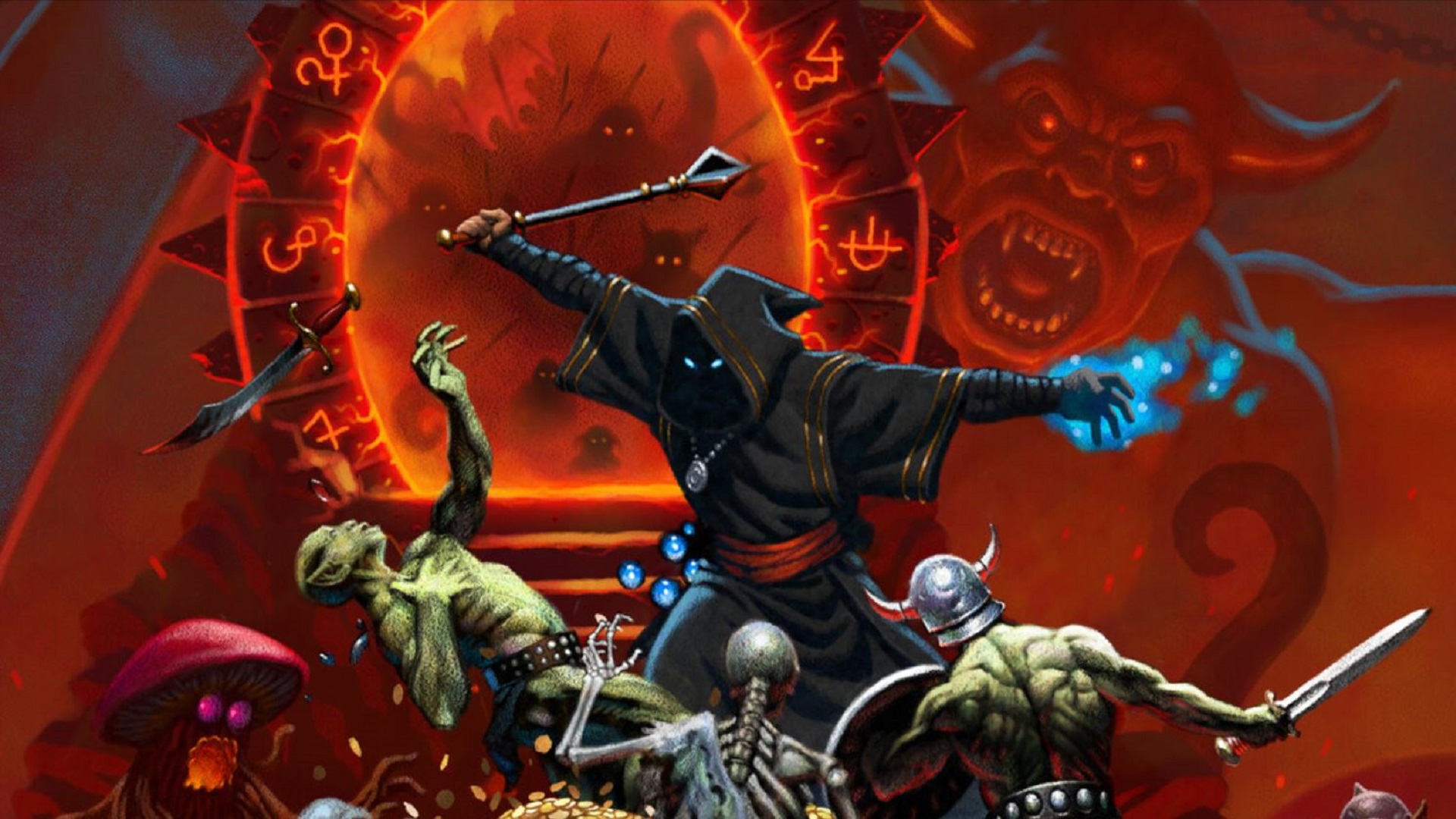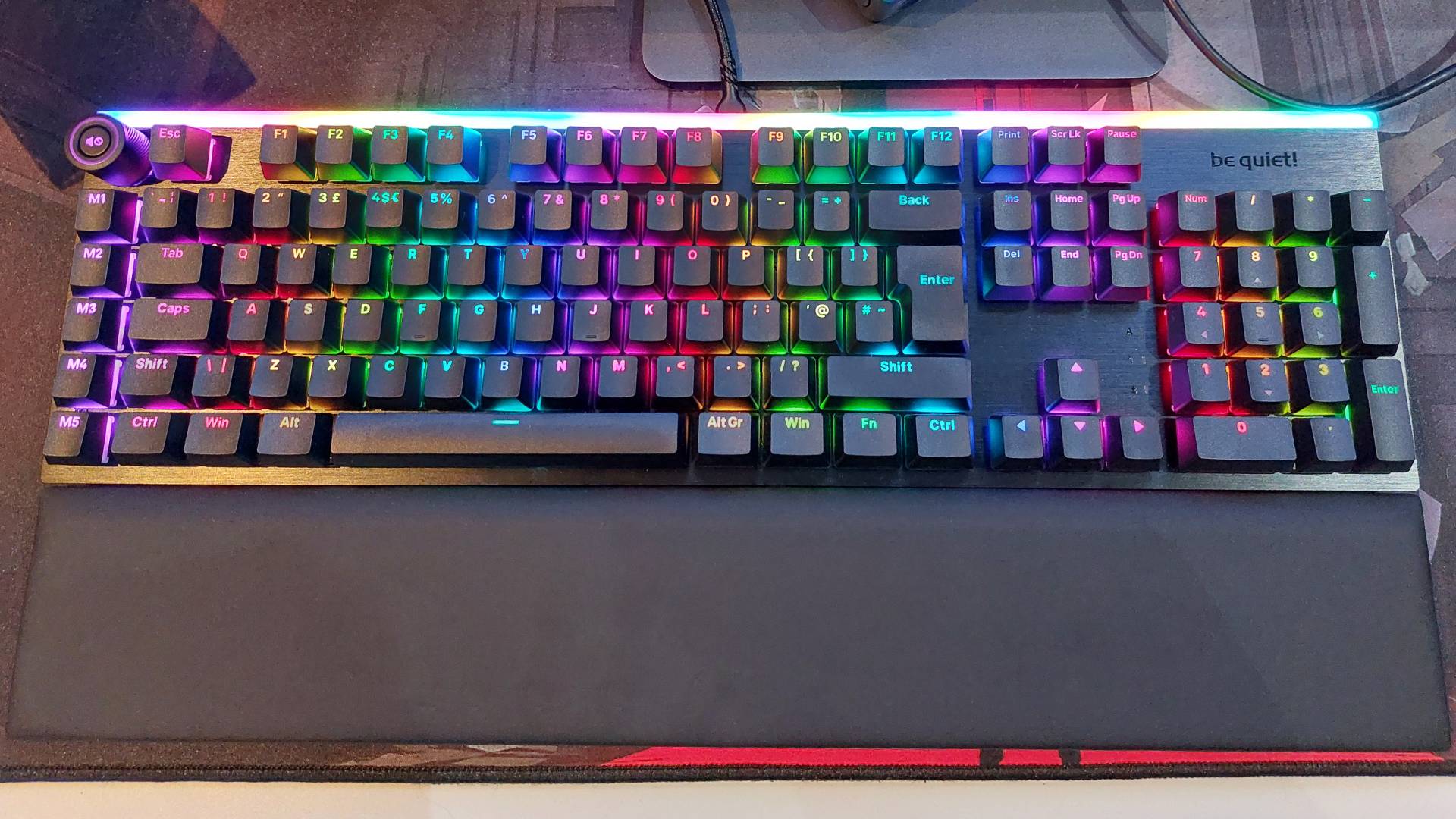
There's a lot to love here, and it's still cooking in early access.
In its current early access state, Wizordum‘s two episodes have a bit of a Goofus and Gallant thing going: I was really flagging by the end of episode one, a fun goblin warlord boss fight doing little to make up for the hour-long death march of its last full level. But then its second act, released in June, won me back around to the medieval fantasy boomer shooter. It’s definitely the trajectory you want to see with a third of the game to go, but some of those first levels get in the way of the fun.
Wizordum’s art and music are definite winners: the vibe is of an old first-person fantasy RPG like Daggerfall or Ultima Underworld, or maybe a brighter, more cheerful take on Hexen and Heretic. It’s a nourishing sort of ’90s fantasy nostalgia to me, distinct from the other forms of ’90s nostalgia that define the subgenre, and the good feelings definitely helped carry me through some of Wizordum’s more frustrating bits.
(Image credit: Emberheart Games)
(Image credit: Emberheart Games)
(Image credit: Emberheart Games)
(Image credit: Emberheart Games)
You’ll be fighting goblins, undead, and dark mages with a suitably medieval arsenal: flame missiles as your pistol, a fireball spell for a rocket launcher, and a Palpatine electro-beam as your Quake lightning gun deal. The aesthetics really help sell what is otherwise a pretty standard FPS arsenal, but there is a notable exception: The major standout is Wizordum’s “machine gun,” a frost staff that spits out icicles which quickly freeze enemies, leaving them open for you to shatter them with your mace. The combo feels very satisfying, and lends Wizordum a rhythm all its own.
There’s some good enemy variety across both episodes, but there are two persistent frustrations that really started to grate on me by the end of my seven hours with the game. The first is dealing with distant enemies or snipers in high perches, an element of verticality that can clash with Wizordum’s lack of jumping and largely close-range arsenal. High-up goblin shamans will often dance behind cover before you can fire back, while episode 2 introduces this acid-spitting cocoon enemy that blends in with the environments, and often seems deliberately placed to troll or trap players—something I usually go for, but here it got on my nerves. Add to that, the game’s retro draw distance fog, while aesthetically a good fit for the low-poly world, often led to enemies painting me with fireballs well before I could see them.
The second combat issue I had was how bad it feels to get caught out by melee enemies—when in range they just start auto attacking at a rapid clip with very little feedback, and there aren’t really options for stunning or knocking them back quickly in a pinch. Usually the dance of avoiding them was fun enough, but I often found myself clipping on scenery I hadn’t noticed, quickly hemmed in by all these little guys chomping away. Worse was exploring a cul de sac for level secrets only to realize I’d been trapped by enemies I hadn’t noticed. In addition to more options for consistently dealing with swarms of enemies and distant foes, Wizordum might benefit from more and better player feedback: hit stop, screen shake, and a more parseable directional indicator when receiving damage could go a long way here.
Long Haul
All twelve of Wizordum’s main levels so far are massive, and there are some common threads across both episodes. They all have a uniquely good sense of place, feeling like they could just as easily slot into an RPG. Levels set in a medieval town, for example, have all kinds of optional interiors to step into: Homes, inns, churches, the full questing burg gamut. And while I didn’t always jive with their sheer sprawl, the scale of these places is consistently impressive.
But that first episode man, the back three levels each clocked in at over 40 minutes my first time through, while E2M6 was a nearly hour-long death march that had me asking “oh my god, there’s still more of it?” in a bad way. There just wasn’t enough juice to these long missions, not enough fun surprises to make me want to turn the next corner, just another fight or puzzle like the one I just got through.
It doesn’t help that Wizordum can have a real esoteric sensibility for its puzzles and exploration. A handy waypoint on your map screen pointing you in the right direction to use that key you just picked up is an inspired addition—one I hope to see from other boomer shooters—but I found it sometimes just wouldn’t show up, or the contours of the auto map were so vague, I couldn’t tell where it was directing me. The puzzles can be even worse, having a ’90s adventure game level of “now how the hell was I going to figure that out on my own.” I appreciate that with FPS level secrets, but the critical path often had me whipping out the ole’ Google Pixel to check a YouTube walkthrough.
But then developer Emberheart Games managed a huge reversal in episode two. For one, these levels are shorter—still marathons relative to other boomer shooters, but a more manageable half-hour on average. More importantly, they just do a better job of living up to the promise of exploring a big shooter level, feeling generous and imaginative rather than overlong, and offering surprises every step of the way.
(Image credit: Emberheart Games)
(Image credit: Emberheart Games)
(Image credit: Emberheart Games)
(Image credit: Emberheart Games)
My favorites came early: E2M1 is a wilderness adventure that sees you descend through a forested valley, explore an abandoned fort, and circle back around to break into a logging cabin and steal a boat. Definitely more of that “feels like a real place” magic, and the way it all knit together just really did something for me, flowing more logically with more intuitive backtracking as opposed to trial-and-error checking cleared rooms. It also concludes with a winning set piece: Cleaving through a battalion of goblins atop a noble rat steed.
And E2M2 is straight heat as well, set on a flotilla of battleships ambling down a river, you have to teleport between their trap-filled holds searching for keys to open up the upper decks. While these two were my favorites, episode two keeps up the videogame-y (complimentary) variety with locales like a haunted house and a swamp temple.
So Wizordum is in a slightly weird place two-thirds of the way through early access: It’s on an upswing to be sure, but somewhat bogged down by an opening act where it feels like Emberheart Games was still figuring things out. The studio has already gone back to revise E1M2, an initially poorly-received sewer level, and the back half of episode one might benefit from similar attention. But with episode three on the way, the best of Wizordum may still be on the horizon, and it definitely gets a qualified recommendation from me in its current early access form.






